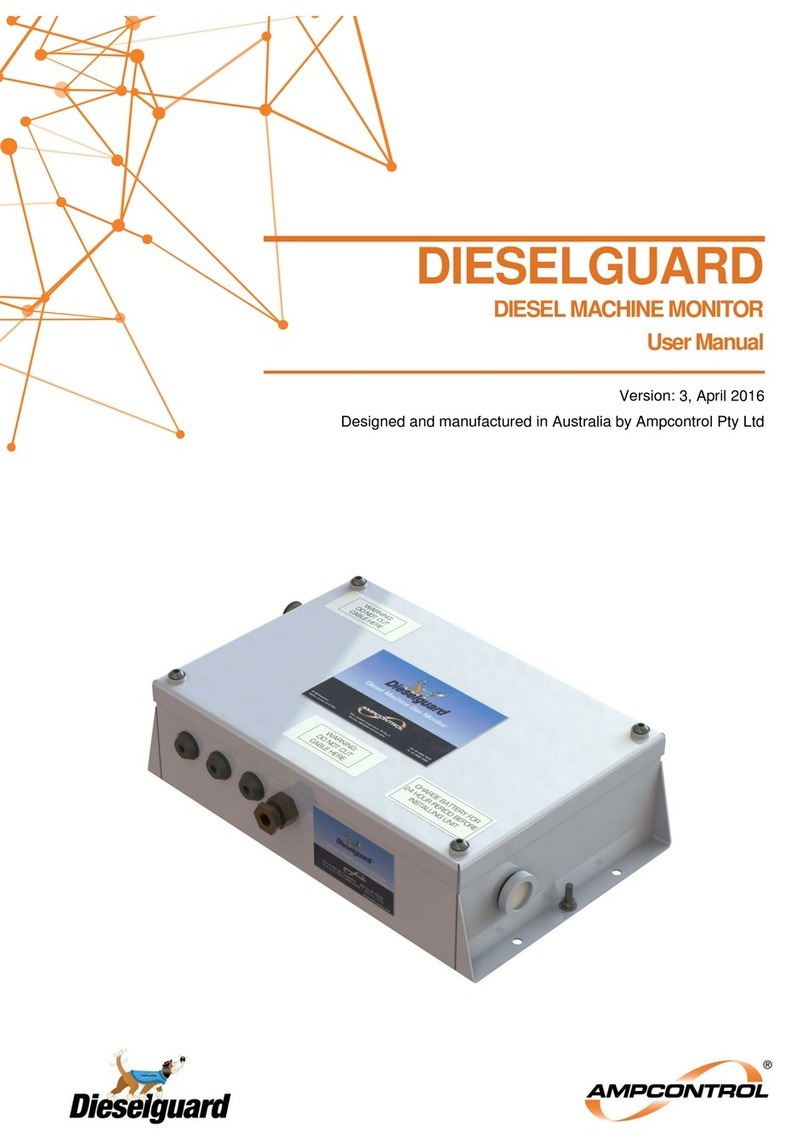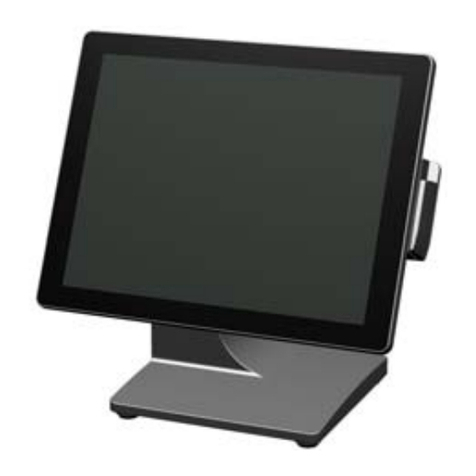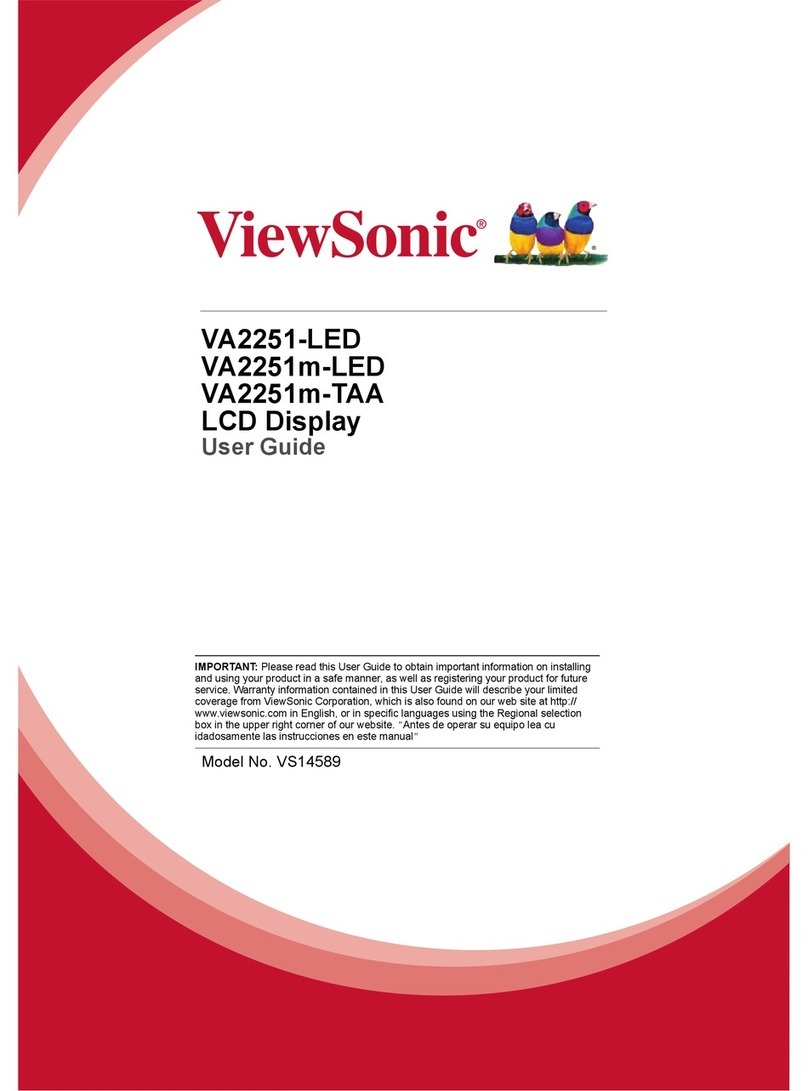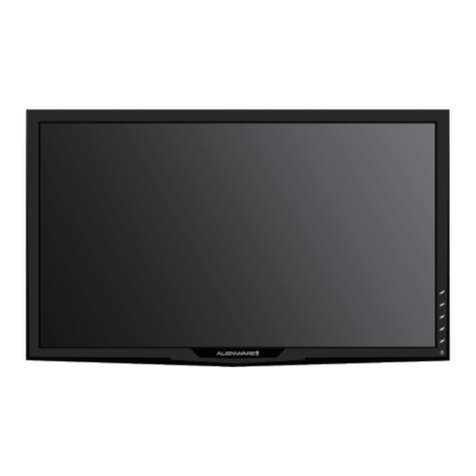EDI 210 Series User manual

THIS MANUAL CONTAINS TECHNICAL INFORMATION FOR THE MODEL 210; PCB Issue G.
INCLUDED ARE GENERAL DESCRIPTION, OPERATIONAL DESCRIPTION, INSTALLATION,
AND SPECIFICATIONS.
THE 210 SERIES SIGNAL MONITOR UNIT IS DESIGNED AND MANUFACTURED
IN THE USA BY EBERLE DESIGN INC., PHOENIX, ARIZONA, AN ISO 9001:2008 REGISTERED
COMPANY. INFORMATION CONTAINED HEREIN IS PROPRIETARY TECHNICAL
INFORMATION OF EBERLE DESIGN INC. PUBLICATION, REPRODUCTION OR USE IN WHOLE
OR PART IS NOT PERMITTED EXCEPT UNDER TERMS AGREED UPON IN WRITING.
©COPYRIGHT 2014 EDI
REVISION: SEPTEMBER 2014
pn 888-0210-003C
Serial Number
CALTRANS
MODEL 210 SERIES
RMS Signal Monitor
Operations Manual


MAINTENANCE NOTE
EBERLE DESIGN INC. SIGNAL MONITORS HAVE BEEN CAREFULLY INSPECTED
AND TESTED TO ENSURE PROPER OPERATION. IT IS RECOMMENDED THAT THE
SIGNAL MONITOR BE TESTED AT LEAST ANNUALLY TO ENSURE COMPLIANCE
WITH THE PROPER SPECIFICATIONS.
- WARNING -
PIN 27 OF THE MAIN CONNECTOR (P6) PROVIDES THE CLOSED CONTACT OF
THE OUTPUT RELAY WHEN THE MONITOR IS IN THE NO-FAULT STATE. WHEN
THE MONITOR IS IN THE NO-FAULT STATE AND THE AUTO/FLASH SWITCH IS
IN THE FLASH POSITION, AC LINE VOLTAGE MAY BE PRESENT ON PIN 27.
THIS PIN WAS PREVIOUSLY DEFINED AS A “NO-CONNECT’ PIN IN LEGACY
EQUIPMENT. TO PREVENT POTENTIAL EXPOSURE TO ELECTRICAL SHOCK,
BEFORE INSTALLING THIS MONITOR THE USER IS CAUTIONED TO CHECK
THAT THE CABINET WIRING IS COMPATIBLE WITH THE USE OF THIS PIN AS A
SOURCE OF AC LINE VOLTAGE.

<blank>

TABLE OF CONTENTS
Section 1 GLOSSARY ........................................................................................................... 1
Section 2 GENERAL DESCRIPTION..................................................................................... 2
2.1 Basic Functions.....................................................................................................2
2.1.1 Conflict Monitoring .........................................................................................2
2.1.2 24VDC Monitoring..........................................................................................2
2.1.3 Controller Watchdog Monitoring (WDT Error)................................................2
Section 3 GENERAL CHARACTERISTICS........................................................................... 3
3.1 Hardware Features................................................................................................3
3.2 AC Line Brown-out Detection................................................................................3
3.3 Non-Volatile Fault Memory....................................................................................3
3.4 PCA (Program Card Absent) Indication.................................................................3
3.5 Internal MPU Watchdog........................................................................................3
3.6 Reset Input Detection............................................................................................4
3.7 LED Test...............................................................................................................4
3.8 Memory Test .........................................................................................................4
3.9 Watchdog Monitoring Disabled Indicator...............................................................4
3.10 Diagnostic Display Mode.....................................................................................4
3.10.1 No-Fault Diagnostic Display.........................................................................4
3.10.2 Fault Diagnostic Display...............................................................................5
Section 4 INSTALLATION ..................................................................................................... 6
4.1 Program Card Programming .................................................................................6
4.2 Watchdog Programming........................................................................................6
4.2.1 Watchdog Enable Switch...............................................................................6
Section 5 FRONT PANEL DESCRIPTION............................................................................. 7
5.1 Indicators...............................................................................................................7
5.1.1 (G) AC POWER Indicator...............................................................................7
5.1.2 (Y) VDC FAILED Indicator .............................................................................7
5.1.3 WDT ERROR Indicator..................................................................................7
5.1.4 CONFLICT Indicator ......................................................................................7
5.1.5 PCA Indicator.................................................................................................7
5.1.6 DIAGNOSTIC Indicator..................................................................................7
5.1.7 CHANNEL STATUS Indicators......................................................................7
5.2 Front Panel Controls .............................................................................................8
5.2.1 RESET Button................................................................................................8
Section 6 THEORY OF OPERATION .................................................................................... 9
6.1 Introduction ...........................................................................................................9
6.2 Main MPU Logic....................................................................................................9
6.3 Serial Peripheral Interface (SPI)............................................................................9
6.4 Internal MPU Watchdog........................................................................................9
6.5 EEprom Memory ...................................................................................................9
6.6 24Vdc Logic Inputs..............................................................................................10

6.7 Display ................................................................................................................10
6.8 Program Card and Switch Inputs.........................................................................10
6.9 RMS-Engine........................................................................................................10
6.10 Power Supply....................................................................................................10
Section 7 MAINTENANCE................................................................................................... 11
7.1 Trouble Shooting.................................................................................................11
Section 8 SPECIFICATIONS................................................................................................ 13
8.1 Electrical..............................................................................................................13
8.1.1 Power Requirements....................................................................................13
8.1.2 AC Voltage Monitors....................................................................................13
8.1.3 DC Voltage Monitors....................................................................................13
8.2 Timing Functions.................................................................................................13
8.3 Mechanical..........................................................................................................13
8.4 Environmental .....................................................................................................14
Section 9 WIRING ASSIGNMENTS..................................................................................... 15
9.1 Monitor Unit Connector (P6)................................................................................15
9.2 Program Card Connector (P4) ............................................................................16
9.3 Program Card Diagram.......................................................................................17
Section 10 PARTS LIST....................................................................................................... 19
Section 11 SCHEMATICS.................................................................................................... 23
Section 12 ASSEMBLY DRAWING ..................................................................................... 32

210 SERIES SIGNAL MONITOR
OPERATIONS MANUAL
Eberle Design Inc. Page 1
Section 1
GLOSSARY
A - Ampere
oC - Celsius
Component - Any electrical or electronic device
DC - Direct Current
DIP –Dual Inline Package
Firmware - A computer program or software stored permanently in PROM
FLASH –An IC Memory with nonvolatile, electrically erasable, programmable features
Hz - Hertz
IC - Integrated Circuit
Jumper - A means of connecting/disconnecting two or more conductive by soldering/desoldering a
conductive wire or by PCB post jumper
LED - Light Emitting Diode
LOGIC - Negative Logic Convention (Ground True) State
mA - milliAmpere
uH - microHenry
ms - millisecond
MCU - Micro Controller Unit
N.C. - Normally closed contact
N.O. - Normally open contact
PCB - Printed Circuit Board
RAM - Random Access Memory
RMS - Root-Mean-Square
ROM - Read Only Memory Device
s –second
Schmidtt Circuit –a circuit that provides hysterisis in the threshold
SW –Switch
uF - microfarad
VAC - Voltage Alternating Current
VDC - Voltage Direct Current
VRMS - Voltage Root Mean Square

210 SERIES SIGNAL MONITOR
OPERATIONS MANUAL
Eberle Design Inc. Page 2
Section 2
GENERAL DESCRIPTION
2.1 BASIC FUNCTIONS
The Signal Monitor is a device used in a traffic controller assembly to monitor traffic signals at an
intersection for conflicting proceed indications caused by malfunctions of the controller, load switches,
field wiring and loads, or miss-wiring of the cabinet. The Signal Monitor also provides error sensing of
the cabinet 24VDC supply and monitors the controller Watchdog output. The Signal Monitor is directly
interchangeable with a standard model 210 Signal Monitor and complies with all specifications outlined
in Chapter 4 (Model 210 Monitor Specifications) of the Caltrans Traffic Signal Control Equipment
Specifications (January 1989) and TEES March 12,2009.
When triggered by the detection of a fault condition which exists longer than the minimum period, the
Signal Monitor will enter the fault mode causing the Output relay contacts to close and enabling the
Stop-Time output to the controller. The cabinet assembly should be wired such that the closure of the
Output relay contacts will cause an automaticswitching of the field signal outputsfrom normal operation
to flashing operation. The Signal Monitor will then display the appropriate fault indications and will
remain in this fault mode until a reset command is issued.
2.1.1 CONFLICT MONITORING
The Signal Monitor is capable of monitoring 16 channels. Each channel consists of a Green and Yellow
field signal input. A Program Card is provided for assigning conflicting channels and inhibiting Yellow
monitoring for required channels. The Signal Monitor detects the presence of conflicting Green or
Yellow signals on the AC field terminations between any two or more channels assigned to conflict on
the Program Card. The monitoring circuitry is capable of detecting either full wave or positive and
negative half-wave field signal outputs at the specified voltage levels.
2.1.2 24VDC MONITORING
Sensing of the cabinet 24VDC supply is provided as specified in Section 4.2, Chapter 4 of the Caltrans
Traffic Signal Control Equipment Specifications. When the 24VDC input falls below the specified
voltage levels the Signal Monitor will enter the fault mode causing the Output relay contacts to close
and enabling the Stop-Time output to the controller. See Section 8.1.3.
2.1.3 CONTROLLER WATCHDOG MONITORING (WDT ERROR)
Sensing of the controller Watchdog output is provided as specified in Section 4.3 of the Caltrans Traffic
Signal Control Equipment Specifications. When a logic transition is not sensed for the specified period
(see Section 8.2) the Signal Monitor will enter the fault mode causing the Output relay contacts to close
and enabling the Stop-Time output to the controller.
An AC Line brownout condition will reset the WDT ERROR fault mode when the AC Line is restored.
The WDT Error indicator will remain illuminated until a Reset command is issued via the front panel
RESET button or External Reset input. This indicates to the technician that a WDT Error occurred but
was cleared by an AC Line brownout.

210 SERIES SIGNAL MONITOR
OPERATIONS MANUAL
Eberle Design Inc. Page 3
Section 3
GENERAL CHARACTERISTICS
3.1 HARDWARE FEATURES
The 210 series Signal Monitor is a dual microprocessor based unit. Since all critical timing functions
are accomplished by the microprocessor, the quartz crystal based accuracy results in very precise and
repeatable measurements. This accuracy is maintained on functions from timing fault conditions to
implementing a unique firmware based digital sampling and filtering algorithm. This algorithm is applied
to all AC field signals to help eliminate false detection in a "noisy" AC line environment.
Input voltages are measured using a true Root Mean Squared (RMS) technique. A dedicated
microprocessor RMS-Engine controls the analog to digital (A/D) hardware which samples each AC
input voltage 32 times per cycle. The RMS-Engine then calculates the true RMS voltage value
producing accurate results which are very insensitive to changes in frequency, phase, wave shape,
and distortion.
A nonvolatile EEPROM device is utilized to retain fault status information in the event of an AC Line
power interruption. The correct fault indications will be displayed upon restoration of AC Line power.
This EEPROM device requires no battery back-up.
3.2 AC LINE BROWN-OUT DETECTION
When the AC Line voltage is below the "drop-out" level the Signal Monitor will suspend all fault
monitoring functions, close the Output relay contacts, and enable theStop-Time output to the controller.
The AC POWER indicator on the front panel will flash at a rate of 2Hz to indicate the brown-out status.
When the AC Line voltage returns above the "restore" level the monitor will resume normal operation
and the AC POWER indicator on the front panel will remain illuminated.
3.3 NON-VOLATILE FAULT MEMORY
The Signal Monitor stores the fault and channel indicator status at the time the fault occurs into a non-
volatile EEPROM device. Should an AC Line power interruption occur while the monitor is in the fault
mode, then upon restoration of AC Line power, the Output relay and Stop-Time output will remain in
the fault mode and the correct fault and channel indicators will be displayed.
3.4 PCA (PROGRAM CARD ABSENT) INDICATION
If the Program Card is absent or not seated properly in the edge connector, the Signal Monitor will enter
the fault mode causing the Output relay contacts to close and enabling the Stop-Time output to the
controller. The PCA indicator will illuminate to indicate this condition. A manual or external Reset is
required after the Program Card is properly seated.
3.5 INTERNAL MPU WATCHDOG
The Signal Monitor generates an internal watchdog pulse from its microprocessor. This occurs at least
once per cycle. If the internal hardware does not detect a watchdog pulse within approximately 325
milliseconds, the Signal Monitor will enter the fault mode causing the Output relay contacts to close
and enabling the Stop-Time output to the controller. The DIAGNOSTIC indicator on the front panel will
illuminate to indicate a monitor hardware and/or firmware failure. This type of failure is configured as

210 SERIES SIGNAL MONITOR
OPERATIONS MANUAL
Eberle Design Inc. Page 4
latching. With latching operation, only a loss of AC Line will restore operation. If the microprocessor
resumes operation the unit will not return to normal operation.
3.6 RESET INPUT DETECTION
A reset command from either the front panel Reset button or External Reset input will cause a one-time
reset command to the monitor. If the reset command is maintained longer than 500 milliseconds, the
monitor will resume monitoring functions and the Reset command will then provide input to the
Diagnostic Display mode (see Section 3.10).
3.7 LED TEST
The monitor will illuminate all front panel indicators for 500 milliseconds when a Reset command is
issued by the front panel Reset button or External Reset Input. This function provides a means to verify
the operation of all front panel indicators.
3.8 MEMORY TEST
The Signal Monitor verifies the proper operation of the memory devices (RAM, EPROM, & EEPROM)
required to operate the monitor. This test is performed when AC Line power is applied, a Reset
Command is issued to the monitor, and periodically during operation. If a memory error is detected, the
Signal Monitor will attempt to update the front panel display and then execute a STOP instruction. This
will cause the Output relay contacts to close and enable the Stop-Time output to the controller. The
DIAGNOSTIC indicator on the front panel will illuminate to indicate a monitor hardware and/or firmware
failure. Due to the nature of these hardware or firmware failures, other fault indicators that may be
concurrently illuminated may not be valid for trouble shooting purposes.
3.9 WATCHDOG MONITORING DISABLED INDICATOR
When the WDT ENABLE switch is in the OFF position to disable Watchdog Monitoring of the cabinet
Controller, or the AC Line voltage is below the Watchdog disable level, the Signal Monitor will flash the
WDT ERROR indicator on the front panel once every 2 seconds. This function informs the service
technician that the cabinet Controller Watchdog monitoring function is disabled.
3.10 DIAGNOSTIC DISPLAY MODE
The Signal Monitor provides two means of displaying the individual Green and Yellow field status. The
No Fault Diagnostic Display mode shows the individual colors while the monitor is not in the fault mode
(intersection operating). The Fault Diagnostic Display mode shows the individual colors that were active
at the time the monitor triggered to the fault mode (intersection in flash). The Fault Diagnostic Display
mode also provides a review of previous fault events.
3.10.1 NO-FAULT DIAGNOSTIC DISPLAY
When the Signal Monitor is not in the fault state, the unit can display the active Green and Yellow field
status individually. To enter this display mode depress and hold the Reset button. Each time the Reset
button is activated and held, the next set of colors will be displayed on the channel status indicators.
The display will continue to show the selected color as long as the Reset button is activated. This mode
only affects the monitor display and normal fault processing will continue to occur. The sequence is as
follows: Reset Fault Status LEDs Channel Status LEDs
#1 (G) AC POWER LED flashes Green field status 1-16

210 SERIES SIGNAL MONITOR
OPERATIONS MANUAL
Eberle Design Inc. Page 5
#2 (Y) VDC FAILED LED flashes Yellow field status 1-16
... (repeats back to top)
3.10.2 FAULT DIAGNOSTIC DISPLAY
Once the Signal Monitor has been triggered by a fault, the Green and Yellow field input status active at
the time of the current fault and the two previous faults may be displayed individually. This status is not
reset by an AC Line power interruption. To enter this display mode remove the Program Card. The
sequence is as follows:
Reset Event PCA LED Fault Status LEDs Channel Status LEDs
--- #1 Single flash Current Fault Status (newest) Current channel status
#1 #1 Single flash (G) AC POWER LED flashes Green field status 1-16
#2 #1 Single flash (Y) VDC FAILED LED flashes Yellow field status 1-16
#3 #2 Double flash Event #2 Fault Status Event #2 channel status
#4 #2 Double flash (G) AC POWER LED flashes Green field status 1-16
#5 #2 Double flash (Y) VDC FAILED LED flashes Yellow field status 1-16
#6 #3 Triple flash Event #3 Fault Status (oldest) Event #3 channel status
#7 #3 Triple flash (G) AC POWER LED flashes Green field status 1-16
#8 #3 Triple flash (Y) VDC FAILED LED flashes Yellow field status 1-16
... (repeats back to top)
To enter this display mode remove the Program Card. Depressing the Reset button advances the
display mode from the normal mode to the Green field input display. The (G) AC POWER LED will
pulse ON once per second to indicate this mode. The channel display LEDs will show the Green
channels active at the time of the fault. The PCA LED will pulse once per second to indicate the current
fault (#1, newest).
Depressing the Reset button again advances the display mode from the Green display mode to the
Yellow field input display. The (Y) VDC FAIL LED will pulse ON once per second to indicate this mode.
The channel display LEDs will show the Yellow channels active at the time of the fault.
Depressing the Reset button again advances the display mode from the Yellow display mode (of fault
#1) to the fault display mode for fault #2. The PCA LED will pulse twice per second to indicate the
previous fault (#2). Additional button closures will cycle through the colors for fault #2 and fault #3
(oldest). After the Yellow display for fault #3, the display will return to fault #1.
To exit this display mode, replace the Program Card. If the Program Card is removed while the Signal
Monitor has not been triggered by a fault, the fault status display mode will show the Green and Yellow
channels active when the Program Card was removed. If a PCA fault is displayed during the review,
the PCA LED will not flash during the Fault Status display step to indicate the fault number.

210 SERIES SIGNAL MONITOR
OPERATIONS MANUAL
Eberle Design Inc. Page 6
Section 4
INSTALLATION
4.1 PROGRAM CARD PROGRAMMING
The diode Program Card provides the means to assign non-conflicting channels and to disable sensing
of Yellow input signals. The card is initially supplied with 120 diodes mounted on the card. This permits
all channels to conflict with all other channels. To program a NON-CONFLICTING (permissive) channel
pair, remove the appropriate diode from the program card. To DISABLE sensing of a Yellow signal on
a channel, solder a wire jumper between the hole pairs labeled for that channel.
Example: If channel 2 Green or Yellow is permissive with channel 6 Green or Yellow, remove
the diode labeled "2-6". To disable Yellow signal sensing on channel 9, a jumper wire must be
soldered in between the pair of holes labeled "9" in the area designated "YELLOW DISABLE"
on the program card.
If the Program Card is removed or not seated properly in the edge connector, the Signal Monitor will
enter the fault mode causing the Output relay contacts to close and enabling the Stop-Time output to
the controller. The PCA indicator will illuminate to indicate this condition. A manual Reset is required
after the Program Card is properly seated.
4.2 WATCHDOG PROGRAMMING
4.2.1 WATCHDOG ENABLE SWITCH
The toggle switch SW2 labeled "WD ENABLE" provides control for the Watchdog Monitoring function.
When the switch is in the ON position, the Watchdog Monitoring function is enabled. When the switch
is in the OFF position, the Watchdog Monitoring function is disabled. The WDT ERROR LED will flash
once every two seconds to indicate that Watchdog Monitoring is disabled.

210 SERIES SIGNAL MONITOR
OPERATIONS MANUAL
Eberle Design Inc. Page 7
Section 5
FRONT PANEL DESCRIPTION
5.1 INDICATORS
5.1.1 (G) AC POWER INDICATOR
The AC POWER indicator will illuminate when the AC Line voltage level is above the brown-out
"restore" level. The indicator will flash at a rate of 2Hz when the AC Line voltage is below the "drop-
out" level. The indicator will extinguish when the AC Line voltage is less than 75 +_2 Vac.
If the Signal Monitor is in the Diagnostic Display mode, the (G) AC POWER indicator will flash ON once
per second to indicate the Channel Status display is showing Green channel status. See Section 3.10.
5.1.2 (Y) VDC FAILED INDICATOR
The VDC FAILED indicator will illuminate when a 24VDC fault condition is detected. This indicator
remains extinguished if the monitor has not been triggered by a 24VDC fault.
If the Signal Monitor is in the Diagnostic Display mode, the (Y) VDC FAILED indicator will flash ON
once per second to indicate the Channel Status display is showing Yellow channel status. See Section
3.10.
5.1.3 WDT ERROR INDICATOR
The WDT ERROR indicator will illuminate when a controller Watchdog fault is detected. If the WD
ENABLE switch is placed in the OFF position to disable Watchdog monitoring, or the AC Line voltage
is below the Watchdog disable level, the WDT ERROR indicator will flash ON once every 2 seconds.
5.1.4 CONFLICT INDICATOR
The CONFLICT indicator will illuminate when a conflicting proceed signal fault is detected.
5.1.5 PCA INDICATOR
The PCA indicator will illuminate if the Program Card is absent or not properly seated. A manual Reset
is required after the program card is properly seated. If the unit is in the Diagnostic Display mode, the
PCA indicator will flash ON (once, twice, or three times) to indicate the fault event number being
displayed. See Section 3.10.
5.1.6 DIAGNOSTIC INDICATOR
The DIAGNOSTIC indicator will illuminate when an internal hardware or firmware test function has
failed. This indicator is intended to inform the service technician of a monitor hardware or firmware
failure. Due to the nature of these hardware or firmware failures, other fault indicators that may be
concurrently illuminated may not be valid for trouble shooting purposes.
5.1.7 CHANNEL STATUS INDICATORS
During normal operation the Signal Monitor Channel Status indicators will display all active proceed
signals (Green or Yellow).
In the fault mode the Channel Status indicators will display all proceed signals active at the time of a
24VDC fault (VDC FAILED) or Watchdog fault (WDT ERROR). In the event of a Conflict only the
channels on which the fault occurred will be displayed.

210 SERIES SIGNAL MONITOR
OPERATIONS MANUAL
Eberle Design Inc. Page 8
5.2 FRONT PANEL CONTROLS
5.2.1 RESET BUTTON
Depressing the Reset button resets the Signal Monitor after it has been triggered by a fault. The monitor
will remain in the reset mode only if the fault condition has been restored to normal. In the event of a
monitor hardware or firmware fault (DIAGNOSTIC) the Reset button may not reset the monitor. A
power-up restart may be required.
The Reset button also provides control of the Diagnostic Display mode. For a complete description of
Diagnostic Display operation see Sections 3.10.

210 SERIES SIGNAL MONITOR
OPERATIONS MANUAL
Eberle Design Inc. Page 9
Section 6
THEORY OF OPERATION
6.1 INTRODUCTION
The Signal Monitor uses a dual microprocessor architecture consisting of an 68HC11D0 main
microprocessor unit (MPU) and a PIC18F24K222 based RMS-Engine. The RMS-Engine is a dedicated
single-chip high speed microcontroller used to sample the AC field inputs and calculate the true Root
Mean Squared (RMS) voltage. This true RMS voltage information is then transmitted to the main
microprocessor for fault processing.
The 68HC11D0 main microprocessor uses ahigh speed synchronous serial I/O system called the Serial
Peripheral Interface (SPI) to exchange data with the peripheral circuit blocks. It controls all functions of
the unit except for those of the RMS-Engine.
6.2 MAIN MPU LOGIC
The 68HC11D0 main microprocessor (U13) operates in the Expanded Multiplexed mode which allows
for external memory devices. The program firmware is contained in the 39SF010A CMOS Flash device
(U11) and program data storage is contained in the SRM2264 8Kx8 static RAM (U16). The expanded
address and data buss is used to link the memory devices with the microprocessor. A 74HC137 (U14)
selector also resides on the buss to generate chip select signals for the SPI devices.
6.3 SERIAL PERIPHERAL INTERFACE (SPI)
The Serial Peripheral Interface (SPI) is a high speed synchronous serial I/O system used to
interconnect the main microprocessor to the following circuit blocks: EEprom (U21), 24Vdc Logic
Processor (U41), Display Multiplexer (U1), Program Card and Switch inputs (U25.3), and the RMS-
Engine (U37).
Data is clocked out of the main microprocessor on the MOSI pin (U13.18) while data is clocked in on
the MISO pin (U13.17). The SCLK signal (U13.20) provides the synchronous clock. A peripheral device
must be selected by U18 before SPI transfers may take place.
6.4 INTERNAL MPU WATCHDOG
Circuit U4A and U4B comprise the internal MPU Watchdog circuit. If this circuit does receive an input
from the main microprocessor for at least 625 ms, the circuit will trigger and force the Output relay to
the fault mode, enable the Stop-Time output, and illuminate the DIAGNOSTIC indicator. This indicates
that the microprocessor has failed to operate its program loop. Under normal conditions the
microprocessor will clock this circuit every 20 ms.
If jumper E5 is installed this fault mode will only be reset by a complete power down cycle.
6.5 EEPROM MEMORY
The 25C640 Serial EEprom (U21) device provides 8192 bytes of nonvolatile memory. It is interfaced to
the main microprocessor through the SPI port. No battery is required to maintain the data in this device.

210 SERIES SIGNAL MONITOR
OPERATIONS MANUAL
Eberle Design Inc. Page 10
6.6 24VDC LOGIC INPUTS
The Cabinet 24VDC input, CU Watchdog input, and External/Manual Reset inputs are processed by a
PIC16F687 microprocessor U41. Opto-couplers U28, U31, U36, and U38 provide electrical isolation
between Logic Ground and Neutral.
6.7 DISPLAY
The front panel LED display is multiplexed by the row driver U3 and the column driver U1. The scan
rate is approximately 60 Hz. Display data is shifted into U3 while individual columns are selected by U1
using the SPI interface.
6.8 PROGRAM CARD AND SWITCH INPUTS
The program card andconfiguration switch inputs are scanned through a diode matrixusing row drivers
U32 and U33. Column drivers U34 and U35 select the column to be read. These devices transfer data
to the main MPU through the SPI interface.
6.9 RMS-ENGINE
The RMS-Engine is a Microchip PIC18F24K22 (U37) single-chip high performance RISC
microcomputer executing proprietary firmware that calculates true RMS voltages for each input
channel. The resulting data is transferred to the main MPU via the SPI interface. The analog to digital
converter (U39) provides the voltage measurement data for the RMS-Engine approximately every 6
microseconds. Analog multiplexers (74HC4051N) select the appropriate channel for sampling. Op amp
circuits U40 provide a buffer circuit.
6.10 POWER SUPPLY
The switching power supply is based on a MIC38C43 (U20) fixed frequency current-mode PWM
controller. The AC Line is full wave rectified and charges capacitor C78 to approximately 170 Vdc. The
PWM controller switches current from C78 through the transformer T1 using transistor Q4 at
approximately 200 KHz. The transformer couples this energy to the secondaries and provides the
following output voltages: VDD=+5 Vdc, VCC=+8 Vdc, VGG=-8 Vdc, VEE=-5 Vdc, VCCL=+16 Vdc,
and VDDS=+5 Vdc. Opto-coupler U26 provides feedback to the controller for regulation.

210 SERIES SIGNAL MONITOR
OPERATIONS MANUAL
Eberle Design Inc. Page 11
Section 7
MAINTENANCE
7.1 TROUBLE SHOOTING
SYMPTOMS:
Will not power on
CAUSES:
A) Blown fuse
B) Internal power supply is low
C) No AC input to the monitor
SOLUTIONS:
A) Remove the fuse and verify with an Ohm meter. Replace if necessary with a fuse with the
same current rating.
B) Check the unregulated voltage across filter capacitor C78 with an oscilloscope or volt meter.
It should read approximately 170 Vdc when the AC Line is equal to or greater than 110
Vrms. If the regulated supply (VDD) is less than 4.5 Vdc the internal power supply
monitoring circuit (U17) will hold the MPU in reset and the DIAGNOSTIC indicator on the
front panel should illuminate. Measure the regulated voltage across capacitor C28. If it
measures lower than 5 _+0.5 Vdc the regulated supply may be overloaded or shorted to
ground.
C) If the fuse is not blown then the monitor may not be getting AC Line or Neutral to the edge
connector of the monitor.
SYMPTOMS:
Faults when AC power is applied
CAUSES:
A) Program card is absent or not seated properly
B) AC Line level is low
C) Memory device fault
D) No internal watchdog pulses
SOLUTIONS:
A) The PCA indicator on the front panel will illuminate. Re-insert the program card with the
diode side of the card facing the front panel slot and depress the RESET switch. The rear
edge of the program card should be flush with the front panel.
B) Measure the AC Line voltage level with a volt meter. If it is below the required "drop-out"
level, the monitor will transfer the Output relay contacts and enable the STOP TIME output
to the controller. The AC POWER indicator on the front panel will flash at a rate of 2 Hz to
indicate the "brown-out" condition.
C) The memory devices are verified when AC Line power is applied or a Reset command is
issued. If a memory fault is detected the MPU executes a STOP instruction. This causes all
MPU activity to cease. Refer to Section 3.8.
D) Absence of internal watchdog pulses may be due to the following conditions: the MPU is
not executing or completing the program loop or the hardware to detect the internal
watchdog pulses is not functioning. Place an oscilloscope probe on U4.2. If there are no

210 SERIES SIGNAL MONITOR
OPERATIONS MANUAL
Eberle Design Inc. Page 12
pulses, depress the front panel reset switch to re-start the MPU. If the watchdog pulses are
now present on U4.2 then trace the remaining pulse detection hardware for the required
waveforms.
SYMPTOMS:
Required channels will not conflict
CAUSES:
Diode on the Program Card is open or absent
SOLUTIONS:
Check the program card to verify that the required diode is in place. If the diode is present then
verify all connections are good and the diode is working correctly.

210 SERIES SIGNAL MONITOR
OPERATIONS MANUAL
Eberle Design Inc. Page 13
Section 8
SPECIFICATIONS
8.1 ELECTRICAL
8.1.1 POWER REQUIREMENTS
Operating Line Voltage .................................................................................................. 75 to 135 Vrms
Operating Line Frequency ........................................................................................................ 60 _+3Hz
Power Consumption.......................................................................................................... 5W (nominal)
8.1.2 AC VOLTAGE MONITORS
Green Signal Inputs (no detect)...................................................................... less than 15 Vrms
(detect)...................................................................... greater than 25 Vrms
Yellow signal Inputs (no detect)...................................................................... less than 15 Vrms
(detect)...................................................................... greater than 25 Vrms
Watchdog Enable (enable).............................................................. greater than 103 _+2 Vrms
(disable).................................................................... less than 98 _+2 Vrms
AC Line Brown-out (drop-out) .................................................................................. 82 _+2 Vrms
(restore) .................................................................................... 87 _+2 Vrms
8.1.3 DC VOLTAGE MONITORS
+24VDC Input (fault).............................................................................. less than +18 Vdc
(no fault).................................................................... greater than +22 Vdc
External Reset Input (true) ................................................................................ less than 3.5 Vdc
(False)......................................................................... greater than 8.5 Vdc
Watchdog Input (true) ................................................................................ less than 3.5 Vdc
(false).......................................................................... greater than 8.5 Vdc
8.2 TIMING FUNCTIONS
Conflict (no fault)............................................................ less than 200 milliseconds
(fault)............................................................ greater than 500 milliseconds
(typical) ............................................................................. 350 milliseconds
VDC Failed (no fault)............................................................ less than 200 milliseconds
(fault)............................................................ greater than 500 milliseconds
(typical) ............................................................................. 400 milliseconds
Watchdog (no fault).......................................................... less than 1400 milliseconds
(fault).......................................................... greater than 1600 milliseconds
(typical) ........................................................................... 1500 milliseconds
AC Line Brown-out (drop-out) .................................................................... 80 _+17 milliseconds
(restore) ...................................................................... 80 _+17 milliseconds
Watchdog Disable (disable)...................................................................... 80 _+17 milliseconds
(enable)....................................................................... 80 _+17 milliseconds
8.3 MECHANICAL
Height .................................................................................................................................... 9.3 inches
Width.................................................................................................................................... 1.38 inches
Depth ................................................................................................................................. 10.17 inches

210 SERIES SIGNAL MONITOR
OPERATIONS MANUAL
Eberle Design Inc. Page 14
8.4 ENVIRONMENTAL
Storage Temperature Range ............................................................................................ -55 to +90 oC
Operating Temperature Range......................................................................................... -37 to +74 oC
Humidity Range ......................................................................................................... 0 to 95% Relative
Other manuals for 210 Series
1
Table of contents
Other EDI Monitor manuals


























